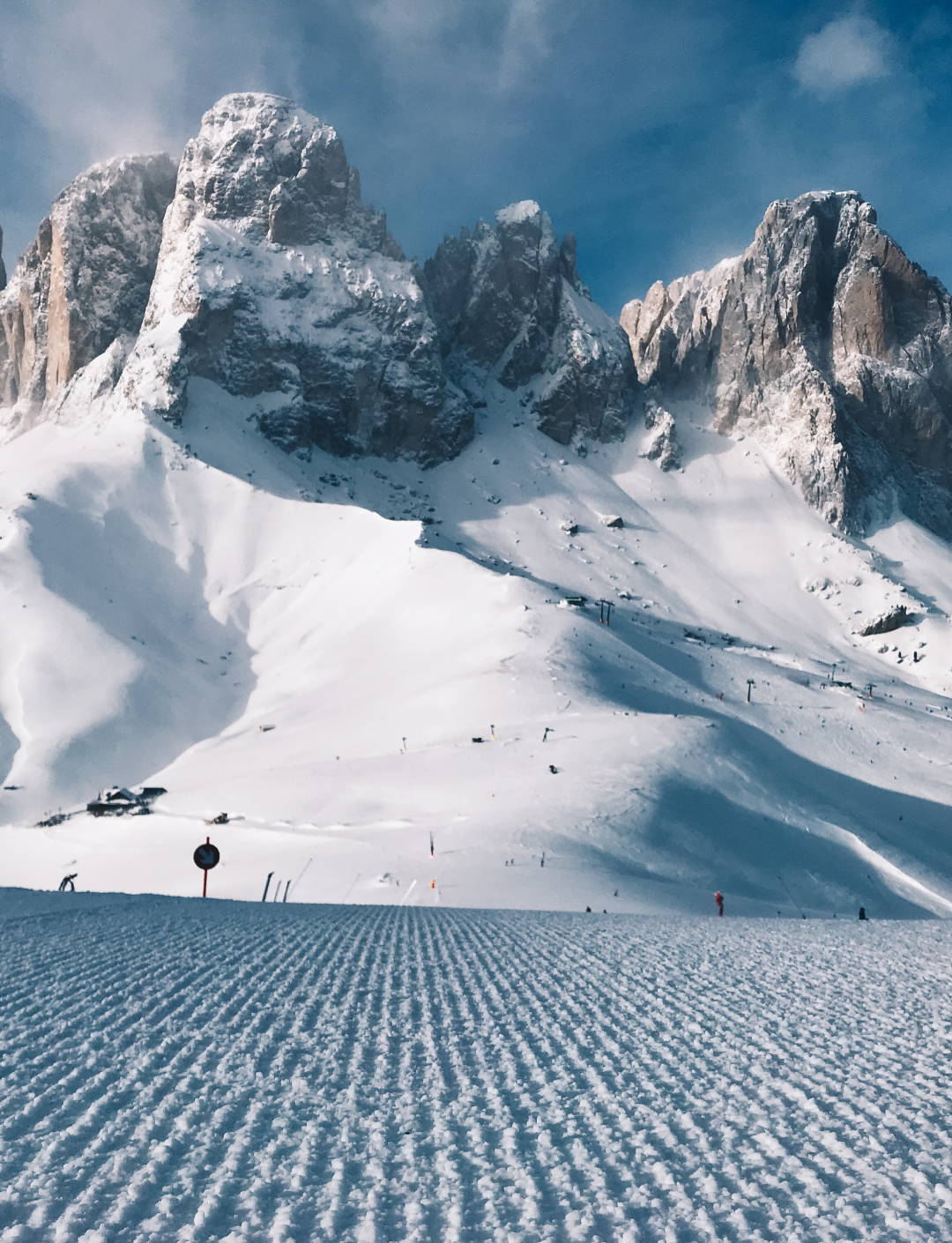Experienced skiers and riders are all too aware of how ill-fitting clothes can cramp your style on the slopes. If you’re a beginner shopping for ski clothing, you might not know where to start. Wearing improperly fitted clothing can leave you too warm or too cold out on the mountain — two situations that can result in uncomfortable — and sometimes detrimental — consequences.

Clothing for snow sports typically costs a pretty penny, so it’s best to do your research before investing in new gear. Be sure to take size measurements before you go shopping and have a general idea of the clothing best suited for the environment in which you plan to ski.
Jackets
A waterproof breathable ski jacket is the most essential piece of outerwear — and where you should consider investing most of your budget. Depending on the temperature, plan to wear your jacket on top of other layers. These can include soft-shell midlayers, insulated midlayers, and/or long underwear.

Buying a jacket that fits comfortably over layers is essential to staying warm and comfortable out on the slopes. When shopping for a ski jacket, make sure you size up enough that the jacket won’t restrict your range of motion or compress the insulation you’ll be wearing for warmth underneath.
Whether you choose a hardshell or an insulated ski jacket will depend on the temperatures in which you’ll primarily be skiing, in addition to the number of layers you choose to wear underneath. No matter which type of jacket you pick, there are three crucial features to make sure it includes: a helmet-compatible hood, wrist gaiters, and a powder skirt.
A helmet-compatible hood will keep your head and neck dry when snow falls and should fit snugly around your helmet without feeling restrictive. Wrist gaiters ensure that when you wipe out (and you will, at one point or another) you won’t end up with sleeves full of snow. A powder skirt serves a similar purpose, but for your torso instead of your arms.
Pants or Bibs
Your ski pants or bibs should be waterproof to keep you dry in unexpected precipitation. Like your jacket, you can choose between an insulated or hardshell type. As far as fit goes, size up in expectation of wearing your pants over a layer or two, but not as much as you would your jacket. Because the sport of skiing and snowboarding requires so much lower torso movement, you want to be sure that your pants or bibs aren’t too restrictive. Look for options that offer 4-way stretch or a relaxed fit.

For features, you’ll want to choose ski pants or bibs with vents to allow for air circulation and ventilation and snow gaiters, designed to keep snow out of your boots. Also, if you’re primarily a skier, you’ll want to pick out pants with reinforced cuffs so that the edges of your skis don’t wear out the bottom fabric of your pants.
Gloves and Mittens
Whether you choose to wear gloves or mittens out on the slopes comes down to personal preference. In general, gloves offer more dexterity while mittens provide more warmth. In addition, some skiers choose to wear liners beneath their gloves or mittens. The benefit of liners is that they provide some amount of warmth when you need to remove your outer gloves or mittens to use your phone or check the trail map, so they’re definitely recommended if you plan on hitting the slopes in cold temperatures.
Gloves and mittens comprise four main elements: shell material, membrane, insulation, and lining. Most products feature either synthetic or leather shell material — and both offer waterproof properties. Synthetic shell layers are typically nylon and include a waterproof breathable membrane, such as
GORE-TEX. Leather shells are made from cowhide or goatskin and are naturally water-resistant. Leather shells generally make for a more durable and pliable glove than nylon alternatives.
Ski gloves and mittens feature varying degrees of insulation that typically fall under one of two categories: down or synthetic. Down insulation is the warmest type of insulation — but only if it stays dry. When down gets wet, it’s rendered pretty much useless. For dry, cold climates, down insulation is the way to go.
Synthetic insulation mimics down using microfiber blends. Some common names you’ll see include
Primaloft and Thinsulate. The benefit of synthetic insulation is that it will keep your hands dry when wet and is generally more affordable than down.
When fitting gloves or mittens, you want to make sure they fit snugly but don’t compress the insulation when you make a fist. Your outstretched fingers shouldn’t quite reach the tips of your gloves — there should be enough fabric left to pinch. Your palm should be completely inside the cuff so that your wrists remain covered. How long your cuffs should be comes down to personal preference and the style of your jacket. Some skiers prefer under the cuff options while others prefer over the cuff.
It might seem intimidating to shop for snow gear, but manufacturers and brands try to make it easy. Be sure to take adequate body measurements, use brand-specific sizing charts, and read user reviews when shopping for snow clothing. If you’re on a budget, you can often find great deals on these styles of snow clothing this time of year through retailers like
UtahSkis.







